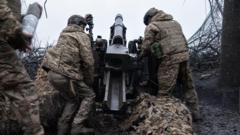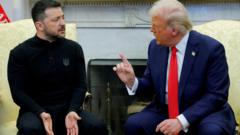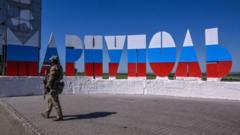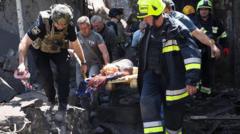**As the prevalence of drone warfare increases, Ukrainian medics embrace advanced magnetic extraction tools that are transforming front-line medical procedures.**
**Innovative Magnetic Extractors Revolutionizing Battlefield Medicine in Ukraine**
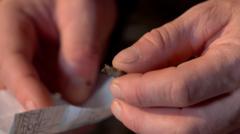
**Innovative Magnetic Extractors Revolutionizing Battlefield Medicine in Ukraine**
**New medical technology is saving lives by efficiently removing shrapnel injuries sustained by soldiers.**
In the harrowing landscape of Ukraine’s battlefields, where drone warfare has escalated the prevalence and severity of injuries, innovative medical solutions are emerging to save lives. The story of Ukrainian serviceman Serhiy Melnyk exemplifies the impact of these advancements. A piece of shrapnel from a drone attack was extracted from his heart by cardiovascular surgeon Dr. Serhiy Maksymenko using a cutting-edge magnetic extractor, sparing him from a potentially fatal injury.
Serhiy Melnyk recalls the moment he realized the severity of his injury: "I thought I was just short of breath under my body armour." The fragment had caused serious damage, grazing his organs and penetrating his lung and heart. According to Ukrainian military medics, shrapnel injuries now account for approximately 80% of all battlefield trauma, necessitating the development of swift and effective treatment methods.
The magnetic extractor, a tool designed to safely and efficiently remove shrapnel, has made a significant difference. Dr. Maksymenko describes the process, which involves making a small incision, inserting the magnetic device, and pulling out the metal fragment. Since its introduction, his team has successfully performed over 70 heart operations using this technology.
The genesis of the magnetic extractor can be traced back to Oleh Bykov, a lawyer-turned-volunteer who has dedicated his efforts to supporting Ukraine's military. His conversations with front-line medics led to the modernization of the extractor concept— originally employed as far back as the Crimean War— into a versatile tool suitable for various types of surgeries.
Unlike traditional methods that often require larger incisions with heightened risks, these extractors allow for less invasive procedures, leading to faster recovery and improved survival rates. Medics have praised the extractor’s capability, calling it “ingenious” in its ability to locate shrapnel swiftly and accurately.
Though the Ukrainian Health Ministry has yet to officially certify this device, it has been deployed extensively, with approximately 3,000 units available in hospitals and used by medics working in hazardous conditions. Volunteers like Oleh emphasize the dire need for such tools in wartime, asserting that expedience in medical innovation takes precedence over bureaucratic processes.
Oleh remains unapologetic about using the extractor, suggesting that during war, lives are paramount and the usual regulations can be bypassed for the greater good. As stated by Dr. David Nott, a seasoned war medic, certification is not the pressing concern when lives are on the line.
Back home, Serhiy's wife, Yulia, expresses profound gratitude for the development of the magnetic extractor that saved her husband. "Thanks to them, my husband is alive," she reflects, highlighting the invaluable contributions of those who have dared to innovate under the pressures of war.
Serhiy Melnyk recalls the moment he realized the severity of his injury: "I thought I was just short of breath under my body armour." The fragment had caused serious damage, grazing his organs and penetrating his lung and heart. According to Ukrainian military medics, shrapnel injuries now account for approximately 80% of all battlefield trauma, necessitating the development of swift and effective treatment methods.
The magnetic extractor, a tool designed to safely and efficiently remove shrapnel, has made a significant difference. Dr. Maksymenko describes the process, which involves making a small incision, inserting the magnetic device, and pulling out the metal fragment. Since its introduction, his team has successfully performed over 70 heart operations using this technology.
The genesis of the magnetic extractor can be traced back to Oleh Bykov, a lawyer-turned-volunteer who has dedicated his efforts to supporting Ukraine's military. His conversations with front-line medics led to the modernization of the extractor concept— originally employed as far back as the Crimean War— into a versatile tool suitable for various types of surgeries.
Unlike traditional methods that often require larger incisions with heightened risks, these extractors allow for less invasive procedures, leading to faster recovery and improved survival rates. Medics have praised the extractor’s capability, calling it “ingenious” in its ability to locate shrapnel swiftly and accurately.
Though the Ukrainian Health Ministry has yet to officially certify this device, it has been deployed extensively, with approximately 3,000 units available in hospitals and used by medics working in hazardous conditions. Volunteers like Oleh emphasize the dire need for such tools in wartime, asserting that expedience in medical innovation takes precedence over bureaucratic processes.
Oleh remains unapologetic about using the extractor, suggesting that during war, lives are paramount and the usual regulations can be bypassed for the greater good. As stated by Dr. David Nott, a seasoned war medic, certification is not the pressing concern when lives are on the line.
Back home, Serhiy's wife, Yulia, expresses profound gratitude for the development of the magnetic extractor that saved her husband. "Thanks to them, my husband is alive," she reflects, highlighting the invaluable contributions of those who have dared to innovate under the pressures of war.

